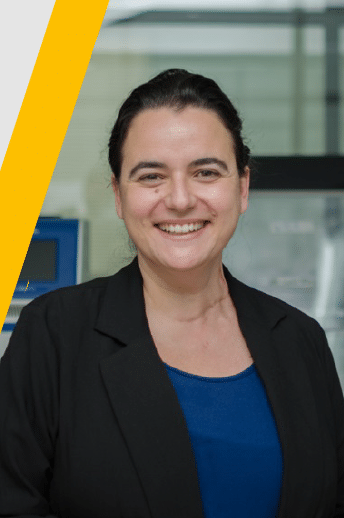Congratulations to our three 2022 Grant Program for Scientists & Start-Ups North and South America winners! We are awarding a group of scientists with funding and resources along their journey in the microbiome space. The winners are receiving 90 samples extracted and sequenced, taxonomic profiling, functional profiling, statistical comparative analysis & a CosmosID-HUB bronze subscription!
The winner of the academia category was Dr. Celia Fernandes de Lima from the Universidad de Conception in Chile!
About Dr. Fernandes de Lima: Celia Fernandes de Lima, PhD, is an assistant professor at the Universidad de Concepción in Chile, where she is a research associate at the Antibacterial Agents Research Laboratory (Laboratorio de Investigación en Agentes Antibacterianos – LIAA).
The LIAA, currently directed by Dr. Gerardo Gonzalez, has focused its research for more than 50 years on the main mechanisms of resistance to antibiotics. One of the lab’s facets includes investigating the biodiversity and behavior of Antarctic bacteria against antibiotics and how resistance spreads in remote settings, in light of the One Health vision.
Abstract title: How does anthropic activity affect the microbiome of the Antarctic Peninsula?
Abstract: Antarctica is considered one of the less disturbed ecozones. However, anthropic activity in Antarctica has been increasing steadily despite its remoteness and harsh climate, with several countries having permanent scientific settlements and as having become a tourist destination. (doi: 10.1016/j.ocecoaman.2020.
Our research group has collected samples from different areas on King George Island over the years and on Union Glacier (Ellsworth Mountains), particularly focusing on assessing the impact of human and animal activity on bacteria recovered from these sites as well as antibiotic resistance patterns of the recovered bacteria. (doi: 10.1371/journal.pone.0179390;
How does anthropic activity affect microbial communities of soil in Antarctica? Are these communities structured differently from similar ecosystems where there is no direct human impact?
We propose to contrast soil samples obtained from the maritime Antarctic under high anthropic activity with soil samples not under the influence of humans, as well as reference samples from remote undisturbed areas. We have assessed and identified the presence of genes involved in antibiotic resistance in these soil samples, and have recovered bacterial isolates by culture, but have no data on the overall bacterial communities of these samples. Characterizing the microbiome structure of soil samples from within different sites in Antarctica would help understand how human activity influences the microbial communities in the soil of the Antarctic peninsula.
Congratulations to Dr. Fernandes de Lima!



